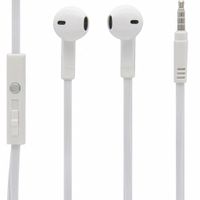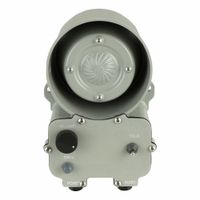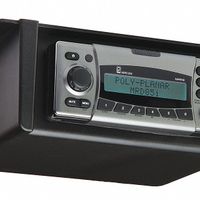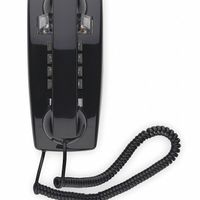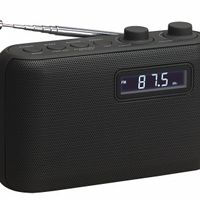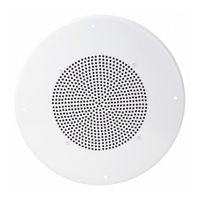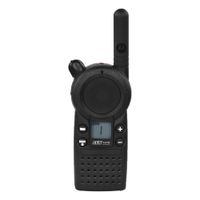Call +(254) 703 030 000 / 751 483 999 / 721 704 777
- Home
- Electronics Batteries
- Electronic Communication Equipment
- Audio Equipment
.....Read More
Frequently Asked Questions
What is the best two-way radio for long-distance communication?
The best two-way radio for long-distance communication is the Motorola T600 H2O. This model is renowned for its robust performance, durability, and range capabilities, making it ideal for outdoor adventures and emergency situations. The T600 H2O operates on the FRS/GMRS frequency bands, providing a range of up to 35 miles in optimal conditions, such as open areas without obstructions.
One of its standout features is its waterproof design, with an IP67 rating, ensuring it can withstand immersion in water up to 1 meter for 30 minutes. This makes it perfect for use in wet environments or during inclement weather. Additionally, the radio floats, making it easy to retrieve if dropped in water.
The T600 H2O also includes 22 channels and 121 privacy codes, offering a total of 2,662 combinations to help avoid interference from other users. It features NOAA weather alerts and an emergency alert button, providing critical information and safety features for users in remote areas.
The radio is equipped with a built-in flashlight, which can be a lifesaver in low-light conditions. It also supports both rechargeable NiMH batteries and standard AA batteries, offering flexibility in power options. The dual power feature ensures that users can stay connected even when access to electricity is limited.
Overall, the Motorola T600 H2O combines long-range communication capabilities with rugged design and essential features, making it the best choice for those needing reliable two-way radio communication over long distances.
How do I choose the right headphones for noisy environments?
To choose the right headphones for noisy environments, consider the following factors:
1. **Noise Cancellation**: Opt for active noise-cancelling (ANC) headphones, which use microphones and speakers to reduce ambient noise. Look for models with adjustable ANC levels to customize noise reduction.
2. **Fit and Comfort**: Choose over-ear headphones for better passive noise isolation, as they cover the entire ear. Ensure they have comfortable padding and an adjustable headband for extended wear.
3. **Sound Quality**: Prioritize headphones with a balanced sound profile. Look for models with clear mids and highs, and a good bass response to ensure audio clarity in noisy settings.
4. **Battery Life**: For wireless ANC headphones, check for a long battery life, ideally over 20 hours, to avoid frequent recharging. Some models offer quick charging features for convenience.
5. **Durability and Build Quality**: Select headphones made from robust materials to withstand daily use. Water and sweat resistance can be beneficial if you plan to use them outdoors or during workouts.
6. **Portability**: Consider foldable or compact designs for easy storage and transport. A carrying case can provide additional protection.
7. **Connectivity**: Ensure compatibility with your devices. Bluetooth headphones should support the latest versions for better connectivity and sound quality. Some models offer multipoint pairing to connect multiple devices simultaneously.
8. **Price and Brand Reputation**: Set a budget and research brands known for quality and reliability. Read reviews and compare features to find the best value for your money.
9. **Additional Features**: Look for features like ambient sound mode, which allows you to hear your surroundings when needed, and touch controls for easy operation.
By considering these factors, you can select headphones that effectively reduce noise and provide a comfortable listening experience in noisy environments.
What are the key features to look for in a marine stereo system?
When selecting a marine stereo system, consider the following key features:
1. **Waterproof and Weatherproof Design**: Ensure the system is rated for marine use with waterproof and weather-resistant components to withstand exposure to water, salt, and UV rays.
2. **Durability and Corrosion Resistance**: Look for materials and coatings that resist corrosion from saltwater and humidity, ensuring longevity in harsh marine environments.
3. **Power Output and Sound Quality**: Choose a system with adequate power output (measured in watts) to deliver clear sound over engine noise and wind. High-quality speakers and amplifiers enhance audio performance.
4. **Connectivity Options**: Opt for systems with Bluetooth, USB, and auxiliary inputs for versatile connectivity with smartphones, MP3 players, and other devices. Some systems also offer Wi-Fi and NFC capabilities.
5. **Compatibility with Marine Accessories**: Ensure compatibility with marine-specific accessories like marine remotes, satellite radio, and GPS integration for enhanced functionality.
6. **User Interface and Controls**: Look for intuitive controls and displays that are easy to operate, even in rough conditions. Consider systems with large, backlit buttons and readable screens.
7. **Expandability**: Choose a system that allows for future upgrades, such as adding more speakers, subwoofers, or additional zones for multi-area audio control.
8. **Installation and Mounting Options**: Consider the ease of installation and the availability of mounting options suitable for your boat's layout.
9. **Brand Reputation and Warranty**: Select a reputable brand known for quality marine audio products, and check for a robust warranty to protect your investment.
10. **Price and Value**: Balance your budget with the features you need, ensuring you get the best value without compromising on essential qualities.
How can I improve the sound quality of my portable radio?
1. **Antenna Adjustment**: Extend and adjust the antenna for better reception. Experiment with its position to minimize static and improve clarity.
2. **Location**: Place the radio near a window or in an open area to reduce interference from walls and electronic devices.
3. **External Antenna**: Connect an external antenna if your radio supports it. This can significantly enhance signal reception.
4. **Speaker Quality**: Upgrade the built-in speaker by connecting external speakers or headphones for better sound output.
5. **Radio Placement**: Elevate the radio on a shelf or stand to reduce interference from surfaces and improve sound projection.
6. **Power Source**: Use fresh batteries or a stable power supply to ensure consistent performance and avoid distortion.
7. **Frequency Tuning**: Fine-tune the frequency manually to find the clearest signal. Digital radios often have a scan feature to help with this.
8. **Noise Reduction**: Use a noise filter or noise-canceling headphones to reduce background noise and enhance audio clarity.
9. **Equalizer Settings**: If available, adjust the equalizer settings to balance bass, midrange, and treble for optimal sound quality.
10. **Maintenance**: Regularly clean the radio and its components to prevent dust and debris from affecting performance.
11. **Upgrade Components**: Consider upgrading internal components like capacitors or resistors if you have technical expertise.
12. **Use of Apps**: For radios with Bluetooth or internet capabilities, use apps to stream higher-quality audio.
13. **Environmental Factors**: Avoid placing the radio near metal objects or electronic devices that can cause interference.
14. **Professional Help**: Consult a technician for advanced modifications or repairs if necessary.
What is the difference between AM and FM radio frequencies?
AM (Amplitude Modulation) and FM (Frequency Modulation) are two types of modulation used in radio broadcasting, differing primarily in how they encode information onto carrier waves.
In AM radio, the amplitude of the carrier wave is varied in proportion to the sound information being sent. The frequency and phase remain constant. This method is simpler and can be transmitted over long distances, especially at night due to ionospheric reflection. However, AM is more susceptible to noise and interference from electrical equipment and weather conditions, as these can also affect amplitude.
FM radio, on the other hand, varies the frequency of the carrier wave to encode the sound information, while the amplitude remains constant. This makes FM less prone to interference and noise, providing better sound quality and fidelity. FM signals are typically used for music broadcasting due to their superior sound quality. However, FM has a shorter range compared to AM and is more affected by physical obstructions like buildings and terrain.
AM radio typically operates in the frequency range of 530 to 1700 kHz, while FM radio operates in the range of 88 to 108 MHz. The bandwidth of FM is wider than AM, allowing for stereo sound and additional data services like RDS (Radio Data System).
In summary, AM is advantageous for long-distance broadcasting and simpler technology, but is more prone to interference and offers lower sound quality. FM provides better sound quality and is less susceptible to interference, but has a shorter range and requires more complex technology.
How do digital voice recorders work and what are their benefits?
Digital voice recorders work by capturing audio signals through a built-in microphone, converting these analog signals into digital data using an analog-to-digital converter (ADC), and storing the data in a digital format, such as MP3, WAV, or AAC, on internal memory or removable storage like SD cards. The device often includes features like noise reduction, automatic gain control, and various recording modes to enhance audio quality. Users can play back recordings through built-in speakers or headphones and transfer files to computers or other devices via USB or wireless connections for further processing or storage.
The benefits of digital voice recorders include:
1. **Portability**: Compact and lightweight, making them easy to carry and use in various settings.
2. **High-Quality Audio**: Advanced microphones and noise-cancellation features ensure clear recordings.
3. **Large Storage Capacity**: Capable of storing many hours of audio, with expandable memory options.
4. **Ease of Use**: Simple interface with intuitive controls for recording, pausing, and playback.
5. **Versatility**: Suitable for a range of applications, including lectures, interviews, meetings, and personal notes.
6. **File Management**: Allows easy organization, editing, and sharing of audio files.
7. **Battery Efficiency**: Long battery life, often with rechargeable options, for extended use.
8. **Discreet Recording**: Small size and silent operation enable unobtrusive recording.
9. **Security Features**: Some models offer password protection and encryption for sensitive recordings.
10. **Integration**: Compatibility with various software for transcription and editing enhances productivity.
Overall, digital voice recorders provide a reliable and efficient means of capturing and managing audio information, making them valuable tools for professionals, students, and anyone needing to document spoken content.
What should I consider when setting up a public address system?
When setting up a public address system, consider the following:
1. **Venue Size and Acoustics**: Assess the size and acoustics of the venue to determine the type and number of speakers needed. Larger venues may require more powerful systems and additional speakers for even sound distribution.
2. **Audience Size**: The number of attendees will influence the system's power requirements. Larger audiences require more powerful systems to ensure everyone can hear clearly.
3. **Purpose and Content**: Determine the primary use of the system (e.g., speech, music, announcements) as this will affect the choice of microphones, speakers, and amplifiers.
4. **Equipment Quality**: Invest in high-quality microphones, speakers, and amplifiers to ensure clear sound reproduction and reliability.
5. **Microphone Type**: Choose the appropriate microphone type (e.g., handheld, lapel, headset) based on the speaker's mobility and the event's nature.
6. **Speaker Placement**: Position speakers strategically to cover the entire audience area without causing feedback or dead zones. Consider using delay speakers for large venues.
7. **Feedback Control**: Implement feedback control measures such as using directional microphones, proper speaker placement, and equalizers to minimize feedback issues.
8. **Power Supply**: Ensure a stable power supply with backup options like generators or UPS systems to prevent interruptions.
9. **Cabling and Connectivity**: Use high-quality cables and connectors to prevent signal loss and interference. Plan cable runs to avoid trip hazards and ensure neatness.
10. **Testing and Calibration**: Test the system thoroughly before the event. Calibrate sound levels to suit the venue and audience size, ensuring clarity and volume balance.
11. **Technical Support**: Have technical support on standby during the event to address any issues promptly.
12. **Compliance and Permits**: Ensure compliance with local regulations and obtain necessary permits for sound levels and equipment use.
